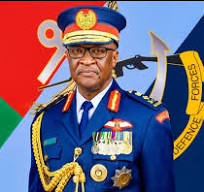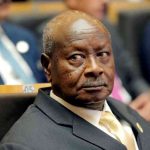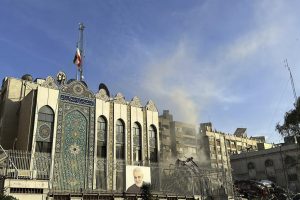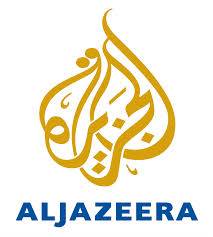
- Tehran has not become a rational and moderate state. Iran has instead become more empowered and emboldened to pursue its revolutionary ideals of anti-Americanism and anti-Semitism.When it comes to the JCPOA nuclear deal — which Iran never signed — Iranian leaders violated the deal three times in the past year.
-
- UN Security Council resolution 2231 is clear. The resolution “calls upon Iran not to undertake any activity related to ballistic missiles designed to be capable of delivering nuclear weapons, including launches using such ballistic missile technology.”
- Iran also increased strategic and tactical cooperation with Russia to undermine US interests, strengthening the Russia-China-Iran axis.
- Iran ranks top in the world for executions per capita. Iran also became the world’s leading executioner of juveniles.
In 2016, Iran reached an unprecedented level when it comes to breaking international laws. It expanded interventionist policies in the region; pursued revolutionary principles of anti-Americanism and anti-Semitism; ignored several UN resolutions and the Joint Comprehensive Plan of Action (JCPOA) between the P5+1 and Tehran, which Iran never signed; continued regional hegemonic ambitions, and abused human rights.
With billions of dollars of revenue pouring into the pockets of Iran’s Supreme Leader Ayatollah Ali Khamenei and the Islamic Revolutionary Guard Corps (IRGC), Tehran did not become a rational and moderate state. Iran instead became more empowered and emboldened to pursue its revolutionary ideals of anti-Americanism and anti-Semitism.
Iran was listed as the top state sponsor of terrorism — “providing a range of support, including financial, training, and equipment, to groups around the world.”
When it comes to the JCPOA nuclear deal — which Iran never signed — Iranian leaders violated the deal three times.
The first violation was reported by Germany’s domestic intelligence agency, the Federal Office for the Protection of the Constitution, in July 2016. The agency stated that the Iranian government was pursuing a “clandestine” path to obtain illicit nuclear technology and equipment from German companies “at what is, even by international standards, a quantitatively high level.” German Chancellor Angela Merkel criticized Iran, but no action was taken.
According to the nuclear deal, Iran should request permission from a UN Security Council panel for “purchases of nuclear direct-use goods”, but Tehran did not. Another report by the Institute for Science and International Security drew attention to Iran’s violation as well:
“The Institute for Science and International Security has learned that Iran’s Atomic Energy Organization (AEOI) recently made an attempt to purchase tons of controlled carbon fiber from a country. This attempt occurred after Implementation Day of the Joint Comprehensive Plan of Action (JCPOA). The attempt to acquire carbon fiber was denied by the supplier and its government. Nonetheless, the AEOI had enough carbon fiber to replace existing advanced centrifuge rotors and had no need for additional quantities over the next several years, let alone for tons of carbon fiber. This attempt thus raises concerns over whether Iran intends to abide by its JCPOA commitments. In particular, Iran may seek to stockpile the carbon fiber so as to be able to build advanced centrifuge rotors far beyond its current needs under the JCPOA, providing an advantage that would allow it to quickly build an advanced centrifuge enrichment plant if it chose to leave or disregard the JCPOA during the next few years. The carbon fiber procurement attempt is also another example of efforts by the P5+1 to keep secret problematic Iranian actions.”
The next violation came in February 2016 as Iran exceeded its threshold for heavy water, used to produce nuclear weapons. In addition, in November 2016, according to a report by the International Atomic Energy Agency (IAEA), Iran again violated the deal by holding more heavy water than permitted. Iran was let go free both times with no consequences.
Third, when it comes violating several UN resolutions, in 2016, Iran significantly ratcheted up its production of ballistic missiles.
Iran test-fired at least eight ballistic missiles, capable of carrying multiple nuclear heads, an act in violation of the nuclear deal, as well as United Nations resolutions 1929 and 2231.
The JCPOA states that Iran should not undertake any ballistic missile activity “until the date eight years after the JCPOA Adoption Day or until the date on which the IAEA submits a report confirming the Broader Conclusion, whichever is earlier.”
The UN Security Council resolution (Paragraph 3 of Annex B of resolution 2231 of 2015) is clear. The resolution “calls upon Iran not to undertake any activity related to ballistic missiles designed to be capable of delivering nuclear weapons, including launches using such ballistic missile technology.”
Another UN Security Council resolution, 1929, also states:
“Iran shall not undertake any activity related to ballistic missiles capable of delivering nuclear weapons, including launches using ballistic missile technology, and that States shall take all necessary measures to prevent the transfer of technology or technical assistance to Iran related to such activities.”
It is accurate to argue that if not for the Obama Administration’s appeasement policies towards Iran, Tehran would not have received tremendous financial relief. Nevertheless, Iran’s Supreme leader Khamenei who enjoys the final say in Iran’s domestic and foreign policy, instigated more anti-American sentiments and continued lashing out at the “Great Satan“. Iran publicly harassed the US Navy, detained US sailors, and imprisoned several American citizens. Khamenei also repeatedly threatened Israel and made incendiary remarks about wiping Israel from the face of earth in less than 8 minutes. In December 2016, Khamenei stated that Israel would not exist in 25 years. He also published a book laying out a plan on how to destroy Israel.

Regionally speaking, as Tehran became more heavily armed with additional revenues and weaponry, it has increased its military interventions in Syria, Iraq, Yemen, and intensified its advisory, financial, weapons and intelligence assistance to its Shiite proxies and Bashar al Assad, bolstering the “Shia axis”. Iran also increased strategic and tactical cooperation with Russia to undermine US interests, strengthening the Russia-China-Iran axis.
Finally, and more fundamentally, when it comes to human rights, Iran set some of the worst records since its establishment in 1979. According to the Human Rights Watch, 2016 saw Iran escalating the mass executions of minorities, and the imprisonment of human rights and political activists. Now, Iran ranks top in the world for executions per capita. Iran also became the world’s leading executioner of juveniles, according to Amnesty International.
These are only some examples of Iran’s disregard for international laws and its human rights abuses.
There is definitely a positive correlation between, on the one hand, Iran gaining more dollars and, on the other hand, breaching international laws, committing egregious human rights violations, spreading its revolutionary values of anti-Americanism and anti-Semitism, destabilizing the region, intensifying regional conflicts and humanitarian tragedies, and pursing its regional ambitions.








































